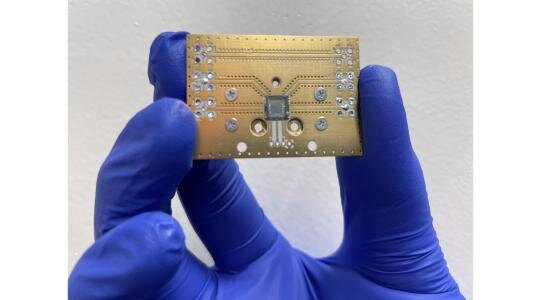
- Researchers in the US were able to read out their qubit on demand and then keep the quantum state intact for over five seconds—a new record for the field of quantum science.
- They hope to open a new avenue for quantum innovation using a technology that is both scalable and cost-effective
Quantum technologies have been very promising when it comes to its ability to transform business and industry. It can contribute to more secure communications networks or even vastly more powerful computation. In fact, quantum computers are seen as a beacon of hope for future information processing. Most recently, researchers in the US discovered that they can perform around 100 million quantum operations in that five-second slice.
For context, all quantum applications require a quantum version of a computer bit, known as a qubit, that stores quantum information. Despite several revelations in the quantum space, researchers are still grappling with how to easily read the information held in these qubits. They struggle with the short memory time, or coherence, of qubits, which is usually limited to microseconds or milliseconds.
That said, a team of researchers, from the US Department of Energy’s (DOE) Argonne National Laboratory and the University of Chicago had recently revealed that they have achieved two major breakthroughs to overcome these common challenges for quantum systems. Firstly, they were able to read out their qubit on demand and then keep the quantum state intact for over five seconds—a new record for the field of quantum science.
To top it off, the researchers’ qubits are made from an easy-to-use material called silicon carbide, which is widely found in lightbulbs, electric vehicles and high-voltage electronics. “It’s uncommon to have quantum information preserved on these human timescales,” according to Principal investigator of the project David Awschalom who is also senior scientist at Argonne National Laboratory.
According to Awschalom, five seconds is long enough to send a light speed signal to the moon and back. “That’s powerful if you’re thinking about transmitting information from a qubit to someone via light. That light will still correctly reflect the qubit state even after it has circled the Earth almost 40 times—paving the way to make a distributed quantum internet,” he added.
Additionally, by creating a qubit system that can be made in common electronics, the researchers hope to open a new avenue for quantum innovation using a technology that is both scalable and cost-effective.
What does ‘10,000 times more signal’ mean for quantum operations?
Every computer needs a way to read information encoded into its bits. The team, who published their findings in the journal Science Advances, used a method called ‘single shot readout’ to easily read a qubit on demand.
The method utilizes precise laser pulses to add single electrons to qubits, depending on their quantum state. This helped them to extend the qubits’ quantum states for longer periods than ever before.
It’s revolutionary simply because maintaining quantum states for extended periods has been a notoriously difficult task in quantum science. Qubits easily lose their information due to environmental noise — this is one of the reasons quantum computers must operate at freezing temperatures.
YOU MIGHT LIKE

Finland has big plans for quantum computing applications
Then, to reduce that infamous background noise, the researchers made their qubits out of highly purified silicon carbide samples, a material that is widely used in a commercial capacity, meaning it should be easy to scale up. By applying precise microwave pulses to their qubit, they extended the amount of time its preserved quantum information to over five seconds via a concept called “coherence”.
With that, the amount of quantum coherence the researchers were able to achieve would allow them to perform over 100 million quantum operations. It’s a breakthrough that could extend the capacity of quantum machines, allowing for more complex quantum computer operations and improved detection capabilities for future quantum sensors.
Chris Anderson of the University of Chicago who is also a co-first author on the paper noted that these pulses decouple the qubit from noise sources and errors by rapidly flipping the quantum state. “Each pulse is like hitting the undo button on our qubit, erasing any error that may have happened between pulses.”
Essentially, they made a translator to convert from quantum states to the realm of electrons, which are the language of classical electronics, like in our smartphones. “We want to create a new generation of devices that are sensitive to single electrons, but that also host quantum states. Silicon carbide can do both, and that’s why we think it really shines,” Anderson said.









